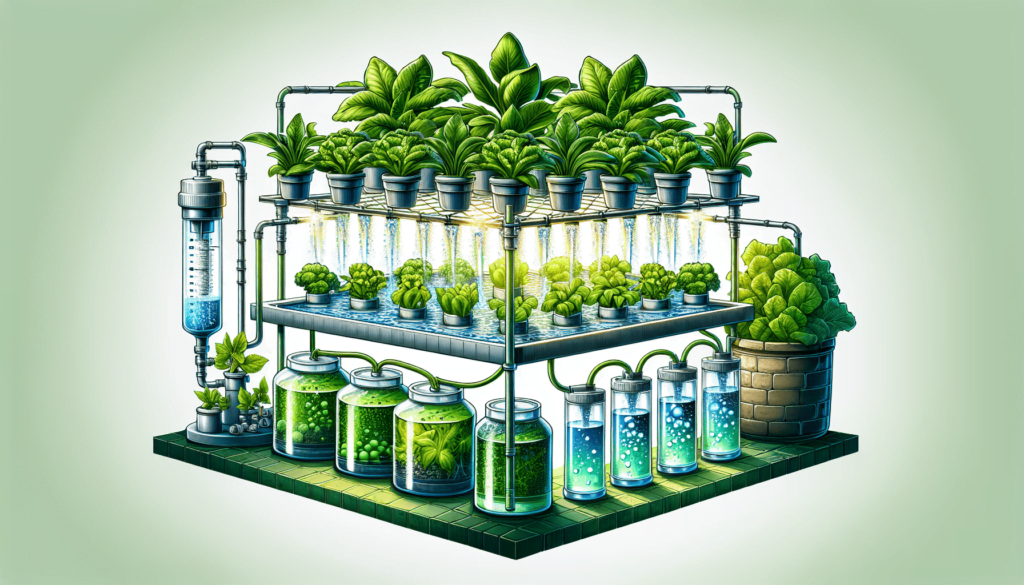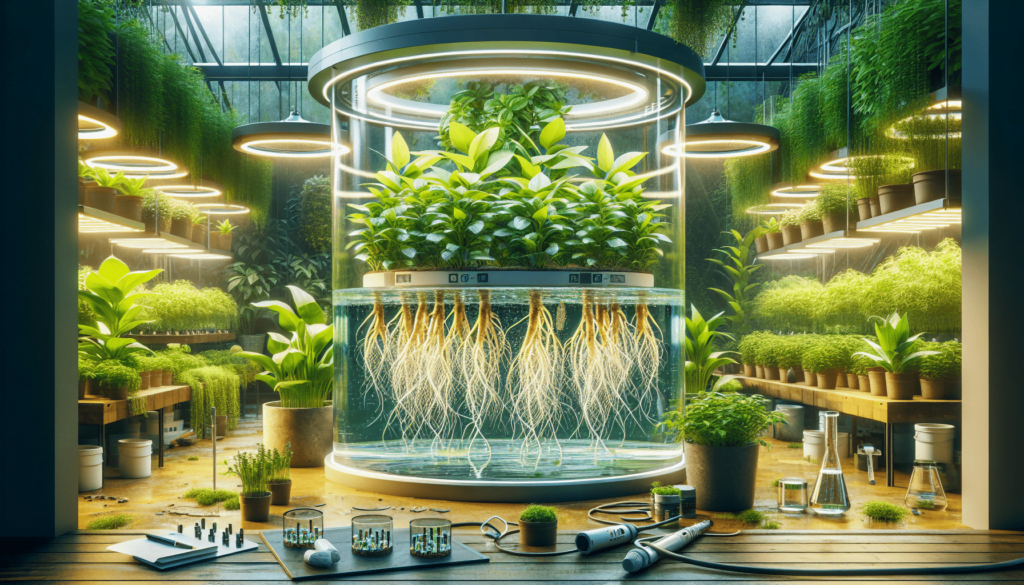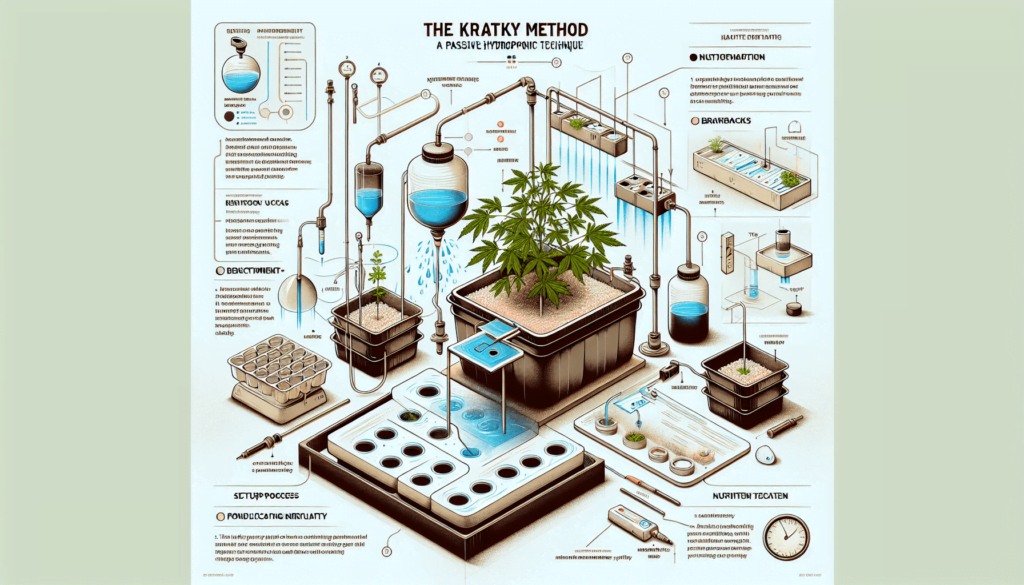In crafting optimal growth conditions for our Kratky Method Hydroponics System, determining the best choice of nutrients presents its own unique set of challenges and considerations. Much like the personal touch required in traditional gardening, hydroponic methods demand a keen understanding of nature’s nuance, albeit in a somewhat different manner. In this regard, this intriguing article will guide us through the process of handpicking just the right nutrients for attaining impressive results with the Kratky Method. Let’s embark on this exciting journey of nutrient navigation for bolstering the performance of your hydroponic system.

Understanding the Kratky Method
Introduction to the Kratky Method
Welcome to the world of hydroponics! We’re here to introduce you to the Kratky Method, a simple and cost-effective way to grow plants. Created by Dr. Bernard A. Kratky, this method allows plants to grow without the need for soil or electricity by floating plants over a nutrient-filled solution. In this system, plants get all they need, including water, nutrients, and oxygen, without requiring any mechanical parts or involvement once it’s set up.
Benefits of using the Kratky Method
The Kratky Method is praised for its simplicity, removing the complexity associated with other hydroponic methods. This system eliminates the need for electricity and soil, cutting down the costs associated with the maintenance and setup of your garden. It’s also great for beginners who are new to the discipline of hydroponics as it requires less involvement after setup.
Ideal situations for using the Kratky Method
The Kratky Method is best suited for small, leafy plants such as lettuce or herbs which can be grown indoors and outdoors. Because of its simplicity and cost-effectiveness, it is ideal for hobbyist gardeners, educational purposes, or those looking to grow their own food in limited spaces. It’s important to note, this method is not suited for larger fruiting plants, as they generally require a more complex system with regular water replenishment.
The Importance of Nutrients in Hydroponics
Role of nutrients in plant development
Just like us, plants need a balanced diet to grow and flourish. In hydroponics, nutrients play a vital role in plant development as they supply all the necessary minerals for photosynthesis, growth and reproduction. These nutrients are directly provided to the plant’s roots via the water in which they are submerged, enabling faster and more efficient uptake than through soil.
Differences between soil and hydroponic nutrients
Unlike soil-grown plants that extract nutrients from the soil, hydroponic plants receive nutrients directly from the nutrient solution. This means you have more control over the nutrition of your plants, ensuring they get exactly what they need to thrive. Hydroponic nutrients are typically more concentrated and must be carefully monitored to avoid imbalances.
How nutrients affect plant yield and quality
Nutrients in hydroponics are directly responsible for plant yield and quality. If the nutrient mixture is right, you can expect healthier plants and increased yield. Each nutrient plays a specific role, for example, Nitrogen aids in leaf and stem growth, while Potassium promotes flower development. Therefore, an imbalance or deficiency can negatively impact the growth and yield.
Macro-Nutrients in Hydroponics
Understanding what macro-nutrients are
In the world of hydroponics, nutrients are split into two categories: macro and micro-nutrients. Macro-nutrients are needed in larger quantities and include elements like Nitrogen, Phosphorus, Potassium, Calcium, Magnesium, and Sulfur.
Key macro-nutrients used in hydroponics
Each macro-nutrient plays a specific role in plant development. Nitrogen promotes leaf and stem growth; Phosphorus aids in flowering and root development; Potassium enhances overall plant health, while Calcium, Magnesium, and Sulfur are essential for specific biochemical reactions in the plants.
How to provide these nutrients in a Kratky setup
In a Kratky setup, all macro-nutrients should be included in your nutrient solution from the very beginning. You should carefully mix the nutrients in the correct proportions according to the plants you are growing and the instructions on your nutrient mix. It’s important not to exceed recommended dilution rates as it can cause nutrient burn.
Micro-Nutrients in Hydroponics
Understanding what micro-nutrients are
Micro-nutrients are just as vital for plant growth as macro-nutrients, but are required in much smaller quantities. They include elements like Iron, Manganese, Zinc, Copper, Molybdenum, and Boron.
Key micro-nutrients used in hydroponics
Each micro-nutrient also plays a specific role in plant development. For example, Iron is crucial for photosynthesis, Zinc aids in growth hormones production, and Molybdenum assists in the use of Nitrogen.
How to provide these nutrients in a Kratky setup
Similar to macro-nutrients, micro-nutrients should be part of your initial nutrient solution in your Kratky setup. They must be accurately measured as an excess or deficiency of these micronutrients can cause plant stress, affecting growth, yield and general plant health.

Choosing the Right Nutrient Solution
Factors to consider when selecting a nutrient solution
Choosing the right nutrient solution requires consideration of factors such as your specific plant needs, the pH value acceptable for your plants, and the quality of your water source. Your chosen nutrient solution should contain all the necessary macro and micro-nutrients.
Recommended nutrient solutions for your Kratky system
Nutrient solutions are widely available in the market and should be chosen based on your specific needs. For beginners, we recommend complete hydroponic nutrient mixes that have been pre-balanced to provide an adequate blend of all the necessary nutrients.
How to properly mix and apply your nutrient solution
Your nutrient solution should be mixed according to the manufacturer’s instructions. Always remember, it is better to start with a weaker solution and build up, especially for seedlings. Once mixed, it’s applied directly to your reservoir in a Kratky system.
Maintaining Nutrient Levels
Constant monitoring for successful growth
In hydroponics, monitoring nutrient levels is crucial for successful growth. Without soil as a buffer, changes in nutrient levels can occur rapidly. Regular testing and adjusting of nutrient solutions ensure your plants get what they need to stay healthy.
Signs to watch for nutrient deficiency or excess
Recognizing signs of nutrient deficiency or excess is important to prevent damage to your plants. Symptoms might include discoloration, stunted growth, leaf curling, or necrotic spots. Identifying which nutrient is causing the issue can be difficult, but with regular monitoring, you can spot issues before they become severe.
Adopting regular testing and adjustment routines
We recommend setting up a regular testing and adjustment routine. The frequency will depend on the size and type of your hydroponic system, but it helps to check pH and nutrient levels at least once a week.
Understanding pH levels
Importance of pH levels in a hydroponic system
The pH level in your hydroponic system plays a crucial part in nutrient availability. If the pH is too high or too low, it can lock out certain nutrients, making them inaccessible to your plants, causing deficiency symptoms.
How pH affects nutrient absorption
Each nutrient has a different absorption rate at different pH levels. Therefore, maintaining an optimal pH range, typically between 5.5 and 6.5 in hydroponic systems, ensures that all nutrients are readily available for uptake by the plant roots.
Maintaining ideal pH balance in your Kratky system
Inside a Kratky system, pH can be adjusted using either pH up or pH down solutions. It’s essential to measure your solution’s pH before adding it to the reservoir, and then regularly afterward to ensure it remains within the ideal range.
Managing Water Level
Water’s role in nutrient distribution
In a Kratky system, water plays a crucial role in nutrient distribution. As the water level decreases due to plant uptake and evaporation, an airspace is created in the reservoir that provides oxygen to the plant roots, ensuring healthy growth.
Optimal water levels for a Kratky system
The optimal water level in a Kratky system would allow only the root tips to be submerged in the nutrient solution, while the majority remains in the damp air space. Too much water can deprive the roots of oxygen, while too little can lead to nutrient deficiencies.
How to adjust water level to optimize nutrient uptake
To adjust the water level in a Kratky system, start with a full reservoir and let the water level drop naturally. Once it gets low, it’s best to top off your reservoir with nutrient solution, but be careful not to fill it up entirely.
Overcoming Common Challenges
Identifying common nutrient-related problems
Some common nutrient-related problems in hydroponics include nutrient burn from excessive nutrient concentration, and deficiencies from imbalanced nutrient solutions or incorrect pH levels. Identifying these issues early is key to addressing them effectively.
Troubleshooting common issues with nutrient solutions
Having a good understanding of nutrient roles and symptoms of deficiencies or excess can help in troubleshooting issues. Adjusting your nutrient solution based on the symptoms, or flushing the system and starting with a fresh balanced nutrient solution can often correct the problem.
Best practices for maintaining a healthy Kratky system
To maintain a healthy Kratky system, remember to regularly check and adjust pH and nutrient levels. Keep your system clean to prevent algae growth, and always pay close attention to your plants as they often show signs of any issues they might be facing.
Advanced Techniques for Nutrient Management
Incorporating automated nutrient delivery systems
As you become more comfortable with hydroponics and the Kratky method, you might want to start exploring advanced techniques like automated nutrient delivery systems. These systems ensure your plants get the exact amount of nutrients they need at the correct intervals, optimising growth and reducing the risk of human errors.
Using growth enhancers and additional supplements
In addition to base nutrients, you might want to consider using growth enhancers and additional supplements that cater to your specific plants’ needs. These could include enzymes, beneficial bacteria, or supplements to enhance flavor and improve yield.
Exploring custom nutrient mixes tailored to specific plant varieties
For the enthusiastic gardener looking to maximize yield or enhance certain features of their plants, customising your nutrient mix could be beneficial. By adjusting the ratios of certain nutrients based on specific plant variety needs, you can cater to your plant’s unique requirements for optimal results. Remember, it’s an advanced technique that requires a deep understanding of plant nutrition, so proceed with caution!
With this information at hand, we hope that you now have a clear understanding of the Kratky method, the vital role of nutrients in hydroponics, and how to effectively manage your nutrient solution in a Kratky setup. Happy gardening!
Forum
Got something to share or a question to ask? Jump in and start a conversation! Whether it’s tips, advice, or just sharing your experiences, we’d love to hear from you. Don’t be shy—your input could inspire or help someone else!- This forum has 1 topic, and was last updated 8 months ago by .
- Topic
- Voices
- Last Post
- You must be logged in to create new topics.


